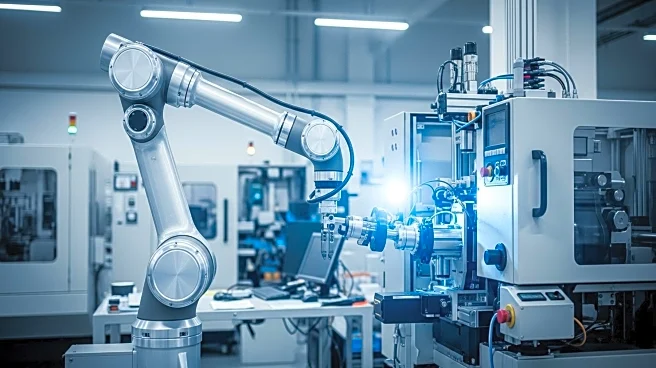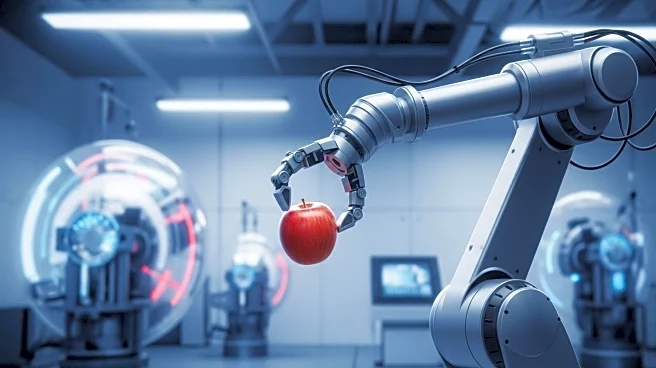What's Happening?
The article discusses the transition from traditional workforce models to digitally enabled environments, emphasizing the importance of preserving 'tribal knowledge' through digitalization. As industries evolve, the need to document and preserve Standard Operating Procedures (SOPs) digitally becomes crucial. This shift aims to improve operational efficiency, reduce carbon footprints, and enhance job execution quality. The digitalization of SOPs allows for real-time access to information, supporting frontline workers with tools like augmented reality wearables. The article highlights the benefits of digitalization in improving Mean Time to Repair (MTTR) for critical equipment and reducing operational downtime.
Why It's Important?
Digitalization of the workforce is essential for maintaining competitive advantage and operational efficiency in modern industries. By preserving tribal knowledge digitally, organizations can ensure continuity and adaptability in the face of workforce changes and technological advancements. This approach reduces safety risks and enhances productivity, positioning companies to better handle disruptions like those experienced during the COVID-19 pandemic. The integration of digital tools supports business continuity and resilience, making it a strategic priority for industries such as oil and gas and manufacturing.
What's Next?
As industries continue to embrace digitalization, there will likely be increased investment in technologies that support workforce enablement and knowledge preservation. Companies may explore partnerships with technology providers to enhance their digital capabilities, leading to further innovations in operational efficiency. The shift towards a digitally enabled workforce may also drive changes in workforce training and development, emphasizing digital literacy and adaptability.
Beyond the Headlines
The move towards digitalization reflects broader trends in workforce management and technological integration. It highlights the need for industries to adapt to changing environments and leverage technology to maintain competitiveness. This transition may influence organizational culture, encouraging a more agile and innovative approach to business operations.










